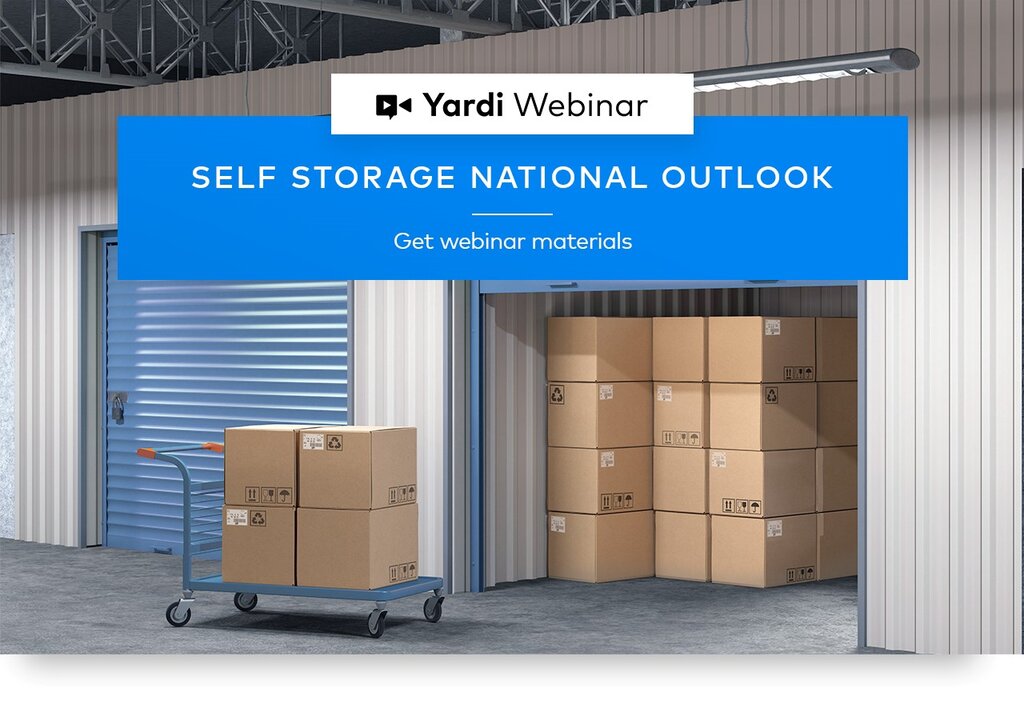By Leah Etling on September 6, 2022 in Matrix
Economic stressors and cranky consumers were a focus of the latest Yardi Matrix webinar, where Jeff Adler, vice president of Yardi Matrix, focused on the self storage market as well as presented a macro-economic outlook and honed in on the storage market for RVs and boats.

The economic recovery from the pandemic essentially complete, return to normal doesn’t necessarily mean a rosy forecast for businesses hoping to keep growing. Adler predicted that a recession is definitely on the horizon by 2024.
“The Fed is in a tightening cycle; they will continue to increase (interest) rates until they see clear evidence of decreasing inflation back to trend. Their goal is two percent. It’s very hard to get to that level given all of the stressors in the economy,” Adler stated.
Those stressors include rising housing rents, which have created affordability issues in some markets; the labor market, which continues to be tight as 3-4 million workers have left the workforce; and inflation, a major source of stress for consumers.
In August, multifamily asking rents dropped for the first time in 2022. The decrease was only by $1, but markets that saw the most heated growth during the pandemic, like Florida cities Orlando, Miami and Tampa, took harder hits.
“You have a cranky consumer base facing all these stressors,” said Adler. Ongoing interest rate hikes are unlikely to buoy their spirits. Some gas price relief has helped a bit, though prices are still much higher than normal in many states.
For the self storage sector, an outlier among real estate sectors with continually impressive performance throughout the pandemic, rents have finally stopped growing just in the last couple of months. Average U.S. street rates for 10X10 non-climate-controlled (NON CC) units remained at $132 in July, matching the all-time high set in June.
“Self storage growth is moderating, and you can see it in street rate growth which has come down now sequentially,” Adler said. “There are some markets that are beginning to decline. Their occupancy is retreating which would tell us that the demand wave is also receding.”
Major markets with the strongest recent self storage rate growth include Atlanta, Orlando, Miami and Tampa. Those that are seeing the largest asking rate declines are Portland, Philadelphia and Washington, D.C.
Investment in the sector, which was historic in 2021, has now tempered.
“From an equity standpoint, storage just crushed it in 2021, from a public REITs perspective. It has pulled back some in 2022, as one would expect. But it’s still performing quite well,” Adler said. Typical occupancy rates for storage in the 80-percentile range indicated robust performance. In the last two years, many markets have seen occupancy rates in the 90-percentile range.
The webinar also covered trends in the niche storage area of RV and boat storage, which Adler will speak on this week at the annual Self Storage Association Fall conference in Las Vegas. Storing RV and boats accounts for three to five percent of the total storage market.
“Demand has been surging, both because of the growing use of RVs and boats, and it’s hard to build (these facilities) in residential areas. The aging of the population means more people are buying these things,” Adler said.
“I do think this is an interesting niche that’s earlier in development than existing consumer self-storage and that makes it an interesting opportunity for early-stage investors.”
Learn more about the economic outlook, state of the self storage industry across the nation, and RV/boat storage investment opportunities in the Yardi Matrix webinar recording.


